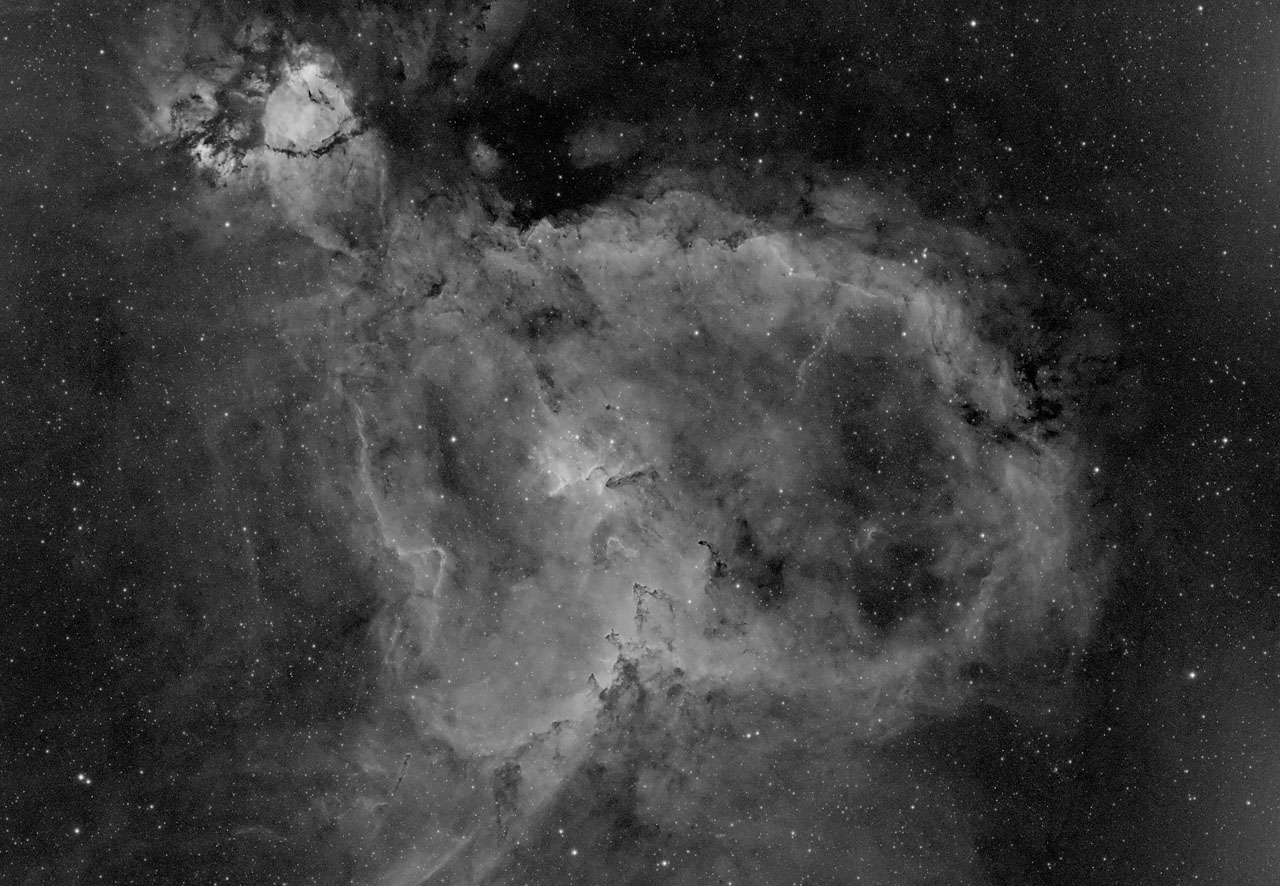The sky has been mostly clear the last couple of nights, but with the Moon nearly full it’s not possible to shoot anything in “normal” RGB, and no reason to go out to a darker location, since the Moon is producing far more light pollution than anything around here. So I set up to do narrowband imaging from the patio behind our apartment. The Heart Nebula is a great target, and fits beautifully in the field of view of the WO Star71 telescope and ASI1600 camera. The above image is just the Hydrogen-alpha (H-a) band, as I haven’t yet captured the other bands. Indeed, I will have to wait until the Moon is less bright and/or farther away from the Heart before I can shoot the oxygen (O-III) band, since moonlight has fairly strong content in the O-III band.
As with the Tarantula Nebula, I processed this using CCDStack, so it is only my second attempt with that software. If you look closely, you might notice that the upper right and lower right corners are a bit brighter than they should be. This is an artifact of the camera. Similar effects can be seen in many cameras and are called “amp glow”. It is caused by the heat produced by one or more amplifiers on or near the image sensor, but should be eliminated by the calibration process, which subtracts a “dark frame” captured with the lens capped, but exposed for the same duration and at the same temperature as the light frames. The “glow” is quite visible in both the light frames and dark frames, but since the subtraction left some residual glow it seems that the glow must be weaker in the dark frames.
In truth, there shouldn’t be any amp glow to begin with. The amplifier(s) don’t need to be on except when the signal is being read from the sensor, which takes very little time. But sensors designed for “normal” imaging tend to ignore this and just leave the amplifier(s) on all the time, or beginning at the start of an exposure. I suspect that is the case here. The image sensor in the ASI1600 is made by Panasonic, and probably intended for conventional digital cameras, where amp glow would not show up with the short exposures used in conventional photography. Still, it is a bit of a mystery why the glow is not removed by calibration. Presumably, the amount of glow depends on the temperature, and the camera regulates the temperature fairly well, but that is only the average temperature of the image sensor chip. The differential temperature across the chip could vary a lot if there are hot spots in specific areas, and that variation would be dependent (to some degree) on the ambient temperature, and how long the camera has been on. It might be better to collect dark frames under the same conditions as the light frames. We generally don’t do that because it wastes valuable imaging time.
The Lunar Eclipse is coming tonight! The local forecast has not changed, and calls for at least partly cloudy skies, especially at the time of totality! Nevertheless, I plan to go to a dark site and get set up before dark to photograph the eclipse.
